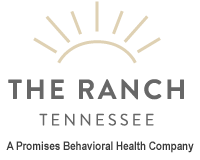Kennedy’s mother had left her when she was only a baby, and she’d never known her father. It was her grandmother who’d raised her, and as a little girl she’d clung to her. Her grandmother was a stout woman who always wore pink. She loved to garden and had a religious air about her. She laughed a lot and raised Kennedy with tenderness. Before Kennedy was born, her mother had become addicted to heroin. She had been unable to stop using during her pregnancy. The state had taken custody of the child, and that is how she came to be in the little house on Sycamore Lane. But by the time Kennedy was 14, she’d grown dissatisfied with unanswered questions about her mother. Why had she gone away? Why had she never visited? Kennedy went in search for herself, and when she found her mother she was still using. Kennedy soon would be too. Within weeks, she was back at her grandmother’s, opening the old metal sewing box stowed under the linens in the back closet. She found herself taking money Gran kept aside for hard times, all the money she had in the world. Kennedy told herself she would come back later to repay it. But later, Kennedy returned to take the car — maybe she could sell it. Gran stood under the eaves, an ache on her as visible as the rosy pink of her dress collar. Gran seemed thinner somehow. But she simply stood still and watched her granddaughter leave. The car groaned against the gravel. There were recovery attempts and steps Kennedy had to work and rework in the intervening years. Step two, step three, step four, step four, again. She was working step eight when she got the call. Gran was sick and wanted Kennedy to come. They hadn’t spoken in the last two years; she had felt such shame. So much sorrow. She hadn’t known her grandmother was dying. She didn’t even tell her boss she was leaving; she flew to the hospital. When she knelt down at her grandmother’s side, she could not speak. Her body folded over the older woman’s right hand. She held it with both of hers, her head bowed over it as if to say, I can’t let you see my face. Slowly, Gran’s other hand came to rest on Kennedy’s hair. “Shhh,” Gran whispered. Kennedy shook with crying. “Child,” Gran continued. “Do not be so ashamed. You are forgiven. Of course, you are forgiven. Now you must forgive yourself.”
The Damage of Shame
In their 1991 book Emotions and Violence: Shame and Rage in Destructive Conflicts, the authors, Thomas J. Scheff and Suzanne M. Retzinger, labeled shame “the master emotion.” Prominent psychologists agree. What makes shame a master emotion is its ability to engage other intense emotions as well as to take them offline from conscious awareness. We can feel ashamed of our feelings: ashamed of feeling anger or fear, for example. And our shame makes us unable to express emotion we may need to let out, causing us to become blocked and developmentally stifled. At other times, shame may amplify emotions. It may cause us to overreact in anger or fear when the situation does not call for quite the degree of our response. This is what makes shame the master, and what makes it so harmful. It is easy to see why shame and addiction go hand in hand. In Kennedy’s case, the emotion of abandonment had caused her to feel unworthy, and unworthiness is simply another way of describing deep shame. This sense of unworthiness is what allowed her to use heroin so quickly after meeting her mother, herself a user. Shame amplified and scattered by mind-numbing heroin abuse was what caused Kennedy to take from her grandmother, the only person who’d ever shown her genuine love, and it was what had kept her away, even after she’d gotten herself clean. She thought she was waiting until the ninth step — amends — but she’d simply felt too ashamed to show her face to the woman she’d harmed (and by hurting she had harmed herself).
Healing From Shame
Healing from shame is the most essential work of recovery, and it is work we must all do in order to know peace and worthiness. So many situations and objects can become layered with the triggering memory of shame that it becomes unconscious, so our work is to bring it into consciousness. To do this, we need a safe space — the loving acceptance of nonshaming others, and the willingness to be compassionate toward ourselves. Healing from shame takes time; our culture teaches us to be ashamed of how we look and how well (or not well) we “do” anything at all. It takes bravery to disengage from the cultural message of unworthiness. To do the work of recovery, we have to choose to be strong enough sometimes to believe a different story — one that writes us as the hero or heroine who doesn’t need firmer abs or more makeup or another drink in order to be more socially acceptable. Whose acceptance do we need most, after all, if not our own? We are already worthy.

